Seagate 600 240GB SATA III 6Gbps SSD Review
Inside The Seagate 600
To start, before we even had a chance to look at the drive, Seagate advised us against opening the drive as damage would likely occur. They were spot on with that bit of advice and of course we had to give it a go – especially after the warning.
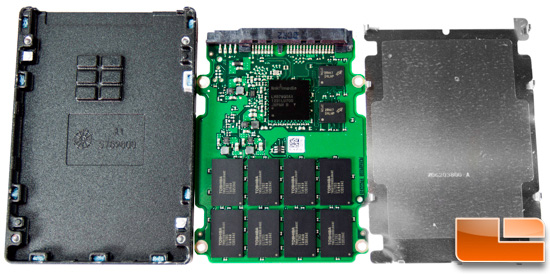
Fortunately, we managed to overcome the passive measures designed to prevent tampering without too much hassle by prying the metal tabs a bit. However, in the process we mangled the back aluminum piece enough to make it obvious the innards were accessed. No damage to the fragile bits occurred and we made sure we performed all testing prior to cracking it open just in case. No screws were present to further hamper our efforts to remove the PCB.
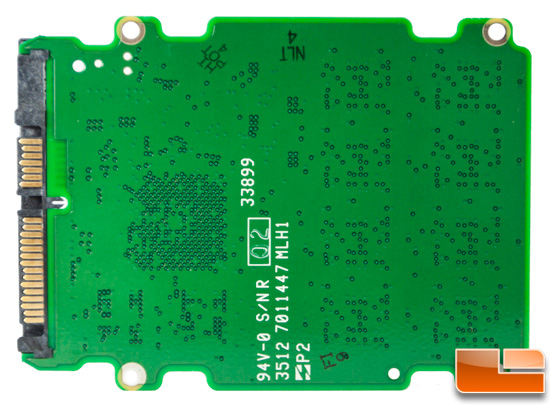
One side of the circuit board is devoid of notable features.
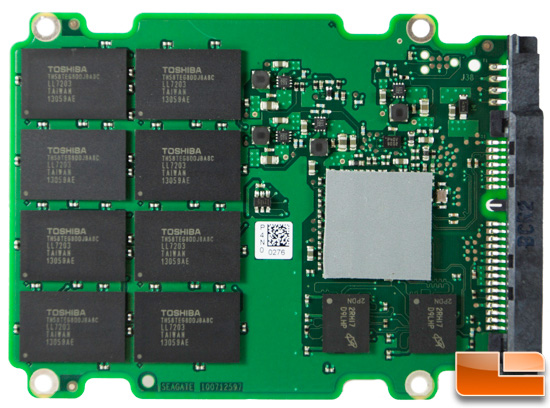
All the important pieces are on the other side where we find the NAND, cache chips and the controller which is concealed by a thermal pad.
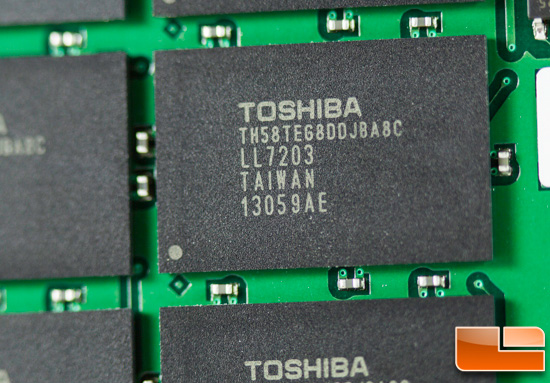
The MLC NAND is Toshiba branded carrying part number TH58TEG8DDJBA8C with a lithography of 19nm. On this particular drive (240GB) there are eight modules of 32GB capacity each for 256GB total on board.
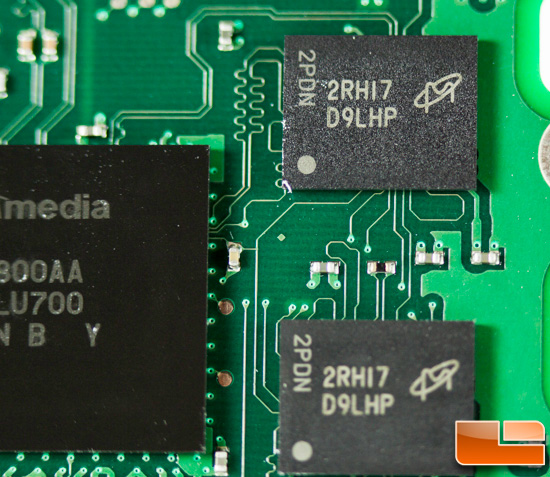
The twin DDR2-800 DRAM cache chips are Micron and each carry part number D9LHP with a combined capacity of 256MB (1Gb each).
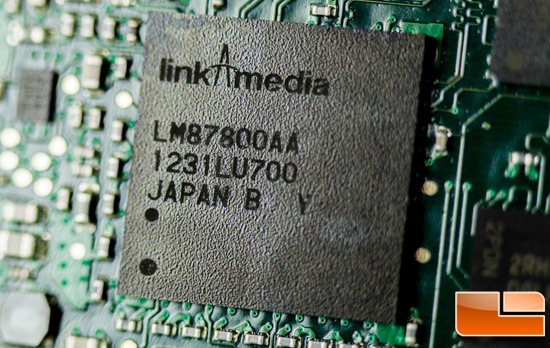
The Link_A_Media Devices (LAMD) LM87800 controller, recently purchased by SK Hynix, is the very same we’ve seen on the Corsair Neutron and Neutron GTX drives. It’s performance has proven to be pretty darn good and without the need for compression of data to boost performance. As such, performance is relatively consistent regardless of the data employed. As we mentioned in the Neutron reviews, it leverages what SK Hynix terms eBoost technology to improve drive endurance through proprietary “adaptive signal estimation techniques” and also takes care of error correction duties. Error correction is critical on this drive as the 19nm NAND is much more prone to errors as is the case the further the architecture shrinks.

Comments are closed.